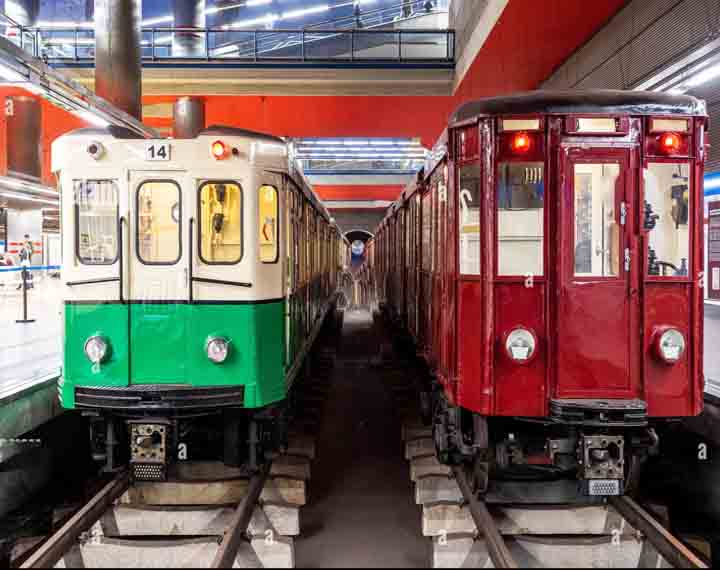
Chamartín Metro Museum
Metro invites you to visit the exhibition of old trains inaugurated by King Felipe VI on 17 October on display at Chamartín station. You can enjoy the very first carriages that ran a century ago on the underground and which have been completely restored to celebrate our centenary. What a treat! And, as if that were not enough, you can also enjoy the collection of more than 100 historical elements that will bring you closer to Metro’s past than you could have ever imagined.
The trains you can see on display are authentic railway jewels, 12 carriages that allow you to travel back through the main milestones of the company in terms of rolling stock, from its origins until the 1960s. More than 28,000 people have already visited and it is expected that this number is sure to rise given the great interest shown. Remember, this is a permanent exhibition that you can visit with your family and friends every Thursday from 15:00 to 18:00, on Fridays and Saturdays from 10:00 to 19:00 and on Sundays from 10:00 to 15:00. Entry is free for Metro passengers; you simply need to have a metro ticket.
Four carriages are of the ‘Cuatro Caminos’-type model, which was the first train to travel on the network and was in service for 70 years. The structure of the carriage was totally metallic, with no cladding, meaning that the whole metal frame was visible.
The exhibition also has two ‘Salamanca’-type models, which began operating in 1943. Their style is much more austere and stark than the others, not only due to the post-war period in which they were built, with a corresponding lack of spare parts, but also to the experience acquired in recent years which saw that more functional and tougher materials than those used until then were more practical.
Another of the restored carriages on display is the ‘Ventas’-type model, which came into operation in 1924, on the occasion of the inauguration of the first stretch of line 2 between Sol and Ventas stations. Similarly, there is a carriage of the ‘Quevedo’-type model which dates back to 1927. This model was acquired due to the extension of line 2 between Sol and Quevedo stations, and had very similar features to the previous model. The main new feature was that it integrated advertising panels in passenger areas
The exhibition also showcases two ‘Legazpi L5’-type carriages, which the company put into service in 1955.
The last carriages to go on display were the ‘1000’-type carriages. These carriages represented a major technological leap, following the example of what was happening at that time in other European and American operations. Changes were introduced then in terms of the traction of the train, its running gear and bogies. Externally, the carriages were painted green and greenish-grey, breaking away from the previously traditional red carriage of the rolling stock of the Madrid underground.
The exhibition also showcases other details of the railway world of the time, from old telephones, tools and utensils, to the changes in the uniforms of underground workers.


